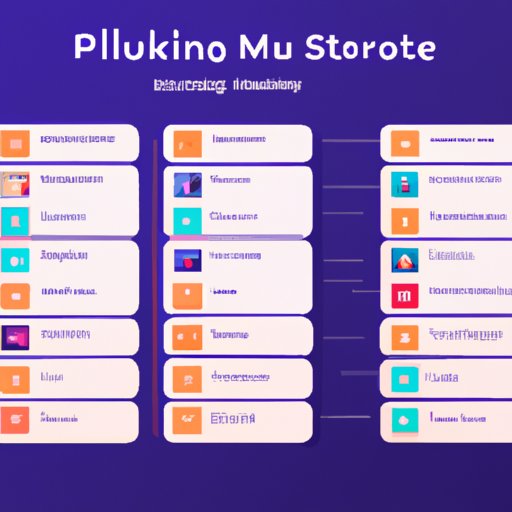Introduction
Nothing brings people together like a shared playlist. Whether you’re creating a soundtrack for a party, organizing songs for a road trip, or just wanting to share some of your favorite tunes with friends, a collaborative playlist is the perfect way to do it. Not only can you find and listen to music together, but you can also customize your playlist with special features like album art and custom soundtracks. In this article, we’ll explore the benefits of creating a shared playlist and provide tips and tricks on how to make the perfect collaborative playlist.

Choosing Music for Your Playlist
The first step in creating a shared playlist is to choose the music you want to include. When selecting songs, there are a few things you should consider. First, think about the type of music you want. Do you want to focus on one genre or mix it up with different styles? You should also take into account who your audience is. Are you creating a playlist for a group of friends or for a special occasion? Lastly, decide on the length of your playlist. Will it be an hour-long mix or a shorter selection of songs? Once you’ve settled on these details, you can start picking songs.
Creating Your Playlist on Popular Music Streaming Services
Once you’ve chosen the music you want to include in your playlist, the next step is to create it. The easiest way to do this is to use popular music streaming services like Spotify and Apple Music. To get started, you’ll need to set up an account if you don’t already have one. Then, you can begin adding songs to your playlist. Most streaming services will have a search bar where you can type in the name of the song or artist you’re looking for. When you’ve added all the songs you want, you can organize and reorder them to your liking.
Personalizing Your Playlist
Once your playlist is created, you can start to personalize it. Most streaming services offer a variety of filters that can help you narrow down your search results. You can also edit individual track metadata, such as the track title, artist name, and album name. Additionally, you can add album art to make your playlist look more visually appealing. These small touches can really make your playlist stand out from the crowd.

Sharing Your Playlist with Friends
Once your playlist is ready, you can start sharing it with your friends. Depending on the service you’re using, you may be able to invite collaborators directly to your playlist. This allows them to add and remove songs, as well as edit track metadata. You can also share your playlist via social media or send a link directly. This makes it easy to share your playlist with anyone, anywhere.

Different Types of Collaborative Playlists
When creating a shared playlist, you can choose from three different types of collaborative playlists. An open playlist allows anyone to add and remove songs, while a closed playlist only allows invited collaborators to make changes. A private playlist is only visible to you and the people you invite. Which type of playlist you choose depends on what kind of collaboration you’re looking for.
Making Your Playlist Stand Out from the Crowd
To make your playlist stand out from the crowd, try incorporating different genres of music. You can also add custom soundtracks or use audio mixing tools to create unique transitions between songs. These extra touches can really bring your playlist to life and make it truly yours.
Conclusion
Creating a shared playlist is a great way to bring people together and share music. By following the tips and tricks outlined in this article, you can easily create the perfect collaborative playlist. From choosing music and setting up accounts to personalizing your playlist and sharing it with friends, you’ll be sure to make a playlist that everyone can enjoy. So get started today and make your own unique, collaborative playlist.
(Note: Is this article not meeting your expectations? Do you have knowledge or insights to share? Unlock new opportunities and expand your reach by joining our authors team. Click Registration to join us and share your expertise with our readers.)
